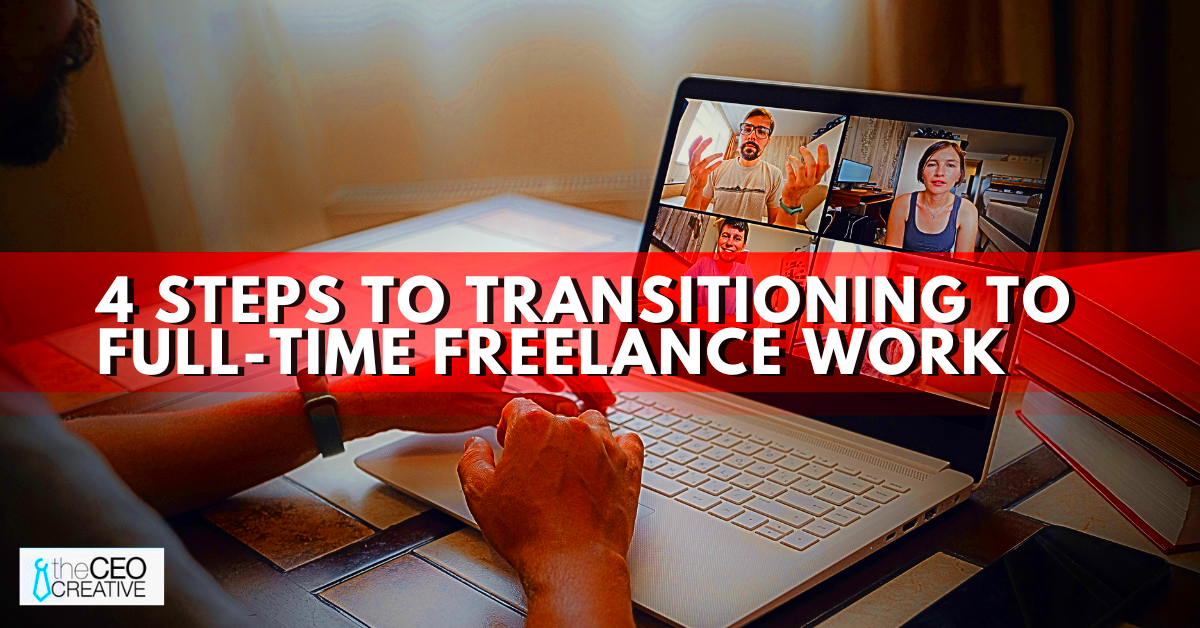Full-time freelancing offers a unique work experience where you are your own boss. Instead of working for a single employer, you take on multiple clients and projects. This model provides flexibility and freedom, allowing you to choose the work that fits your skills and interests.
Freelancers typically work in various fields, such as writing, graphic design, programming, and marketing. Understanding the freelance landscape is essential before making the leap into full-time freelancing. It's not just about working from home; it's about running your own business.
Benefits of Full-Time Freelancing

Transitioning to full-time freelancing can bring numerous advantages. Here are some key benefits:
- Flexibility: You can set your own hours and work from anywhere, which allows for a better work-life balance.
- Variety of Work: Freelancers often work on diverse projects, which keeps work exciting and helps develop new skills.
- Control over Income: You can set your rates and take on as many clients as you want, potentially leading to higher earnings.
- Autonomy: You make the decisions regarding your projects, clients, and work environment.
These benefits can lead to a more satisfying and fulfilling career if you enjoy working independently.
Also Read This: How to Be a Fiverr Seller
Challenges of Full-Time Freelancing
While freelancing offers many perks, it also comes with its share of challenges. Here are some common issues that freelancers face:
- Inconsistent Income: Unlike a regular job, freelance income can fluctuate, making budgeting a challenge.
- Client Management: Finding and keeping clients can be tough, requiring ongoing marketing efforts.
- Isolation: Freelancers often work alone, which can lead to feelings of loneliness or disconnect from a team.
- Administrative Tasks: Freelancers must handle their own taxes, contracts, and invoicing, which can be time-consuming.
Being aware of these challenges can help you prepare and develop strategies to overcome them, ensuring a smoother transition to full-time freelancing.
Also Read This: How to Create an Invoice as a Freelancer
Preparing for the Transition
Making the switch to full-time freelancing requires careful planning. It's not just about quitting your job and hoping for the best; it's about setting yourself up for success. You need to consider various factors to ensure a smooth transition.
Here are some essential steps to prepare for your freelance journey:
- Assess Your Skills: Identify your strengths and determine which services you can offer. Make a list of your skills and how they can be valuable to potential clients.
- Build a Portfolio: Create a portfolio showcasing your work. This could include past projects, case studies, and testimonials from previous clients.
- Set Clear Goals: Define what you want to achieve as a freelancer. This could include income goals, types of clients, or specific projects you'd like to work on.
- Create a Financial Plan: Prepare for the financial aspects of freelancing. Set a budget and determine how much money you need to save before making the leap.
Taking these steps can help you build a strong foundation and increase your chances of success in the freelance world.
Also Read This: How Long Does It Take for Fiverr to Clear Payments?
Building a Client Base
Once you're ready to dive into freelancing, the next crucial step is building a client base. Without clients, you won't have work, so this is where you should focus your efforts. Here are some strategies to attract clients:
- Networking: Connect with people in your industry. Attend events, join online groups, and engage with others on social media. Personal connections can lead to job opportunities.
- Freelance Platforms: Use platforms like Fiverr, Upwork, or Freelancer to find clients. These sites can help you get your first few gigs and build your reputation.
- Cold Pitching: Identify potential clients and reach out to them directly. Craft personalized pitches that highlight how you can solve their problems.
- Referrals: Ask for referrals from friends, family, or previous clients. A personal recommendation can go a long way in gaining trust.
By actively pursuing these strategies, you can gradually build a strong client base that supports your freelance career.
Also Read This: How to Make Money on Fiverr in Pakistan
Managing Finances as a Full-Time Freelancer
Financial management is one of the most critical aspects of freelancing. Unlike traditional jobs, freelancers face unique financial challenges, such as inconsistent income and lack of employer benefits. Here are some tips for managing your finances effectively:
- Set Aside Funds: Save a portion of your income for taxes. Freelancers are responsible for their own taxes, so it’s essential to set aside money regularly.
- Create a Budget: Track your income and expenses. Create a monthly budget to ensure you know where your money is going and can cover your essential costs.
- Invoicing: Use invoicing software to streamline billing. Ensure your invoices are clear and sent promptly to encourage timely payments.
- Emergency Fund: Build an emergency fund to cover unexpected expenses. Aim for three to six months' worth of living expenses saved up.
By implementing these financial strategies, you can create a stable financial foundation for your freelance career, helping you to thrive in your new role.
Also Read This: Where to Download Fiverr Gig Video Template Free
Time Management Tips for Freelancers
As a freelancer, managing your time effectively is crucial. Unlike traditional jobs with set hours, you have the freedom to choose when and how you work. However, this flexibility can lead to procrastination or burnout if not handled properly. Here are some time management tips to help you stay productive:
- Set a Schedule: Create a daily or weekly schedule that outlines your work hours. Sticking to a routine helps establish a work-life balance.
- Prioritize Tasks: Use a priority matrix to determine which tasks are urgent and important. Focus on high-priority work to maximize productivity.
- Use Tools: Utilize time management tools like Trello, Asana, or Todoist to track tasks and deadlines. These tools can help you stay organized and accountable.
- Limit Distractions: Identify distractions in your work environment and minimize them. This might mean setting boundaries with family or using apps to block social media during work hours.
- Take Breaks: Schedule short breaks to recharge. Techniques like the Pomodoro Technique encourage working for focused periods followed by brief rest.
Implementing these tips can help you manage your time better and ensure you stay on track with your projects.
Also Read This: Vocal Touch: Adding Text-to-Speech in Canva
FAQ about Transitioning to Full-Time Freelancing
Transitioning to full-time freelancing raises many questions. Here are some frequently asked questions and their answers to help clarify your path:
- How do I know if I am ready for full-time freelancing? Assess your financial stability, client base, and personal readiness. If you have enough savings and steady clients, it may be the right time.
- How can I find clients as a new freelancer? Network, use freelance platforms, and consider cold pitching. Building a strong online presence can also attract clients.
- What should I include in my freelance contract? Clearly outline project details, payment terms, deadlines, and cancellation policies to protect yourself and your clients.
- How do I handle taxes as a freelancer? Keep detailed records of your income and expenses. Consider working with an accountant to ensure you meet your tax obligations.
These FAQs provide a solid foundation for understanding what to expect as you transition to full-time freelancing.
Conclusion and Final Thoughts
Transitioning to full-time freelancing is an exciting journey filled with opportunities and challenges. By understanding the benefits and difficulties, preparing adequately, and managing your time and finances effectively, you can set yourself up for success.
Remember, every freelancer's path is unique, and it's essential to stay adaptable. Embrace the freedom that comes with freelancing, but also be prepared to put in the work to achieve your goals. Stay committed, continue learning, and don’t hesitate to reach out for support from other freelancers. You can build a rewarding and fulfilling freelance career with the right mindset and strategies!




